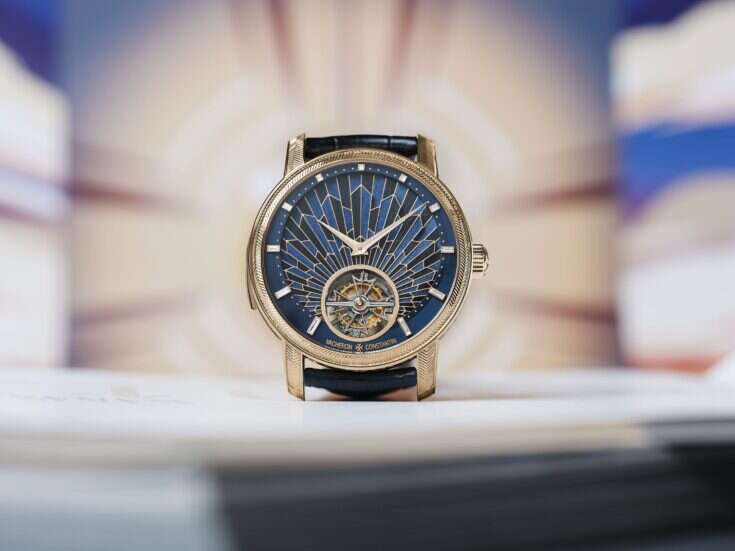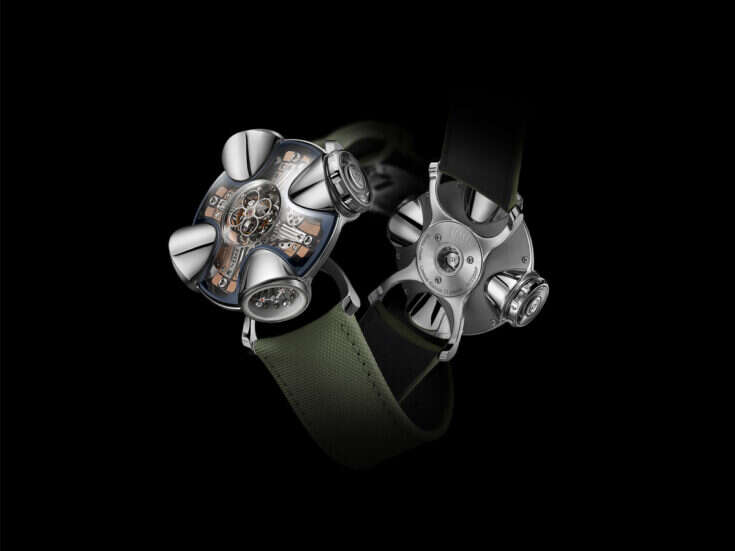
Since the 18th century, Vacheron Constantin has crafted some of the most precise, advanced and innovative watches in the world. Now the brand brings its métiers d’arts prowess to all new heights with its Tribute to Great Civilisations collection.
There are likely fewer than a handful of top watch brands capable of paying tribute to the world’s greatest art, cultures, histories and empires. The esteemed Vacheron Constantin, though, with roots dating back almost 270 years to 1755, is at the very top of that handful.
In spring 2022, after partnering with the famous Musée du Louvre in Paris three years ago, the brand unveiled its Tribute to Great Civilisations series of extremely limited-edition watches. Not only do the new timepieces in this collection pay homage to some of the greatest cultures of all time, but also — and maybe more important for this venerable brand — they are most likely the epitome of Vacheron Constantin’s exceptional watchmaking expertise and superlative métiers d’arts abilities.
The highly knowledgeable watchmaking and design team of this Geneva-based brand spent months tirelessly working with the curators at the Louvre to define and select four of the greatest civilizations of all time to embrace. The process required selecting the era, the perfect art form for the dial center and background, as well as the writing on the watch — all from the same time frame.
[See also: Elite Traveler Reveals Top Watches in the World for 2022]
The entire process took several years and was no easy feat, despite the fact that the artisans and craftspeople employed by Vacheron Constantin all excel in the ancient arts of enamel, miniature hand painting, marquetry, engraving, sculpturing and more.
“I believe we have elevated the level of métiers d’arts to a point that we have never reached before. Even though these watches pay tribute to ancient civilizations, they are totally modern and innovative, as well,” says Christian Selmoni, Vacheron Constantin’s style and heritage director.
“One of the most challenging aspects was to be respectful of history, to be authentic and to re-create the past as precisely as possible but in a truly artistic way. The craftsmanship and the dedication to the origins of each watch makes this series jump from amazing to phenomenal.”
Just five of each of the four civilization watches will ever be made. They include the golden age of Ancient Egypt with the Grand Sphinx de Tanis in the center of the dial; the rise of the first Roman emperor, Augustus, with the bust of Augustus in the center; the Hellenistic period of ancient Greece with the winged statue of Victoire de Samothrace in the limelight; and the Persian Empire of Darius the Great, with the powerful symbol of the lion in the center.
[See also: Time and Life: The Most Intricate Métiers d’Art Watches]
Each watch is more beautiful and intricate than the next and, thanks to the collaboration with the Louvre, each is an incomparable work of art and history brought to life expressly for the wrist.
Easily one of the most impactful of the series is the Lion de Darius watch that pays homage to the Persian Empire of the Achaemenids (559-330 BC), where the Frieze of Lions chiseled in stone and then painted graced the walls of the courtyard of the palace of Darius the Great in Susa (southwestern Iran). For the watch, the lion takes center stage in the form of a 3D handcarved, sculpted piece of gold whose stately muscles, fur and gaze are magnificently detailed.
The backdrop behind the lion on the dial is a breathtaking stone wall made in colors that emulate the original painting on stone. It is handcrafted using 69 individually cut pieces of fragile turquoise and yellow jasper that are then hand-placed in a remarkable marquetry that deftly blends the past with the present.
Some of the pieces even have natural veining in them (making them even more fragile) to further emulate the original stonework. Even the sapphire crystal features laser-etched verbiage using the handwriting and language of that time period.
A single artisan is responsible for the carved lion centerpiece, while another hand-cuts every one of the individual gemstones before meticulously putting them into place on the dial using tiny tweezers. While Vacheron Constantin did not track the number of hours that go into the making of just one dial, experience tells us that each master artisan easily spends hundreds of hours executing his or her craft.
For this series, Vacheron Constantin uses one of its most coveted movements: the 237-part Manufacture-made Caliber 2460/G4/2. The timepiece is totally devoid of hands so that the artists can use the entire dial of the watch as a canvas. The hours, minutes, day and date are depicted in four apertures along the top and bottom perimeter of the face. Each movement is hand-assembled and hand-finished according to the strictest standards of excellence commanded by the Geneva Seal.
The watch boasts a transparent sapphire caseback that allows viewing of the movement, which is completed with an oscillating weight engraved with the façade of the Louvre in the 18th century — another nod to the history of the museum and the revered Swiss watch brand.
While the price of each of these watches is by request only, experts estimate that they should fall somewhere in the $150,00 to $250,000 price range — far less expensive than anyone familiar with the intense craftsmanship, time and commitment to excellence that went into their making could imagine.
[See also: Upcycling Time: The Most Sustainable Watch Brands]
This article appears in the 05 Sep 2022 issue of the New Statesman, Fall 2022






